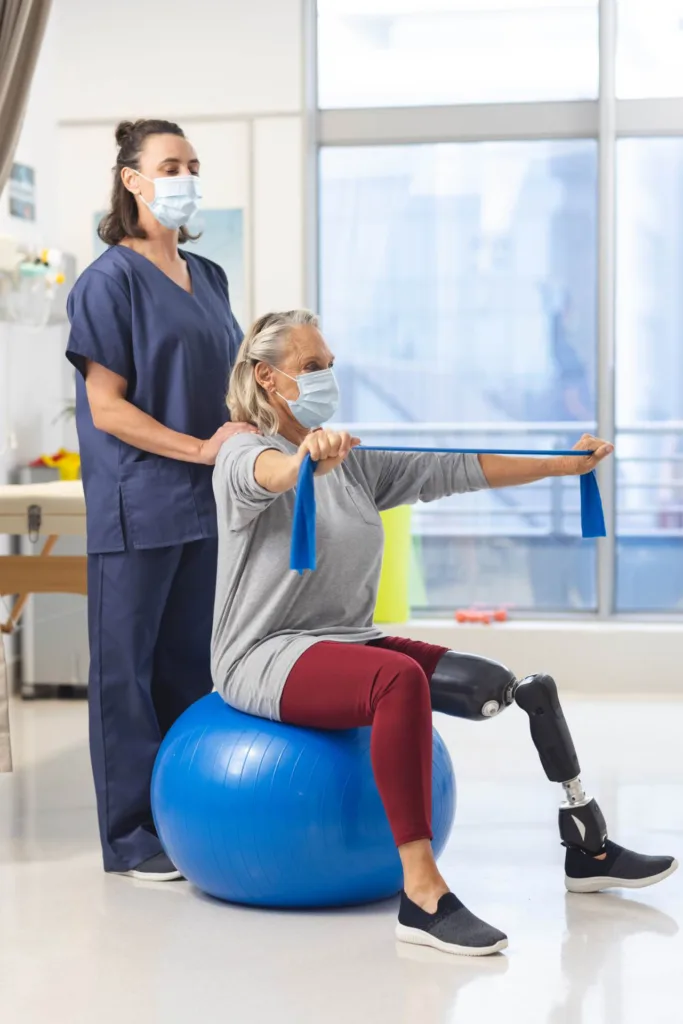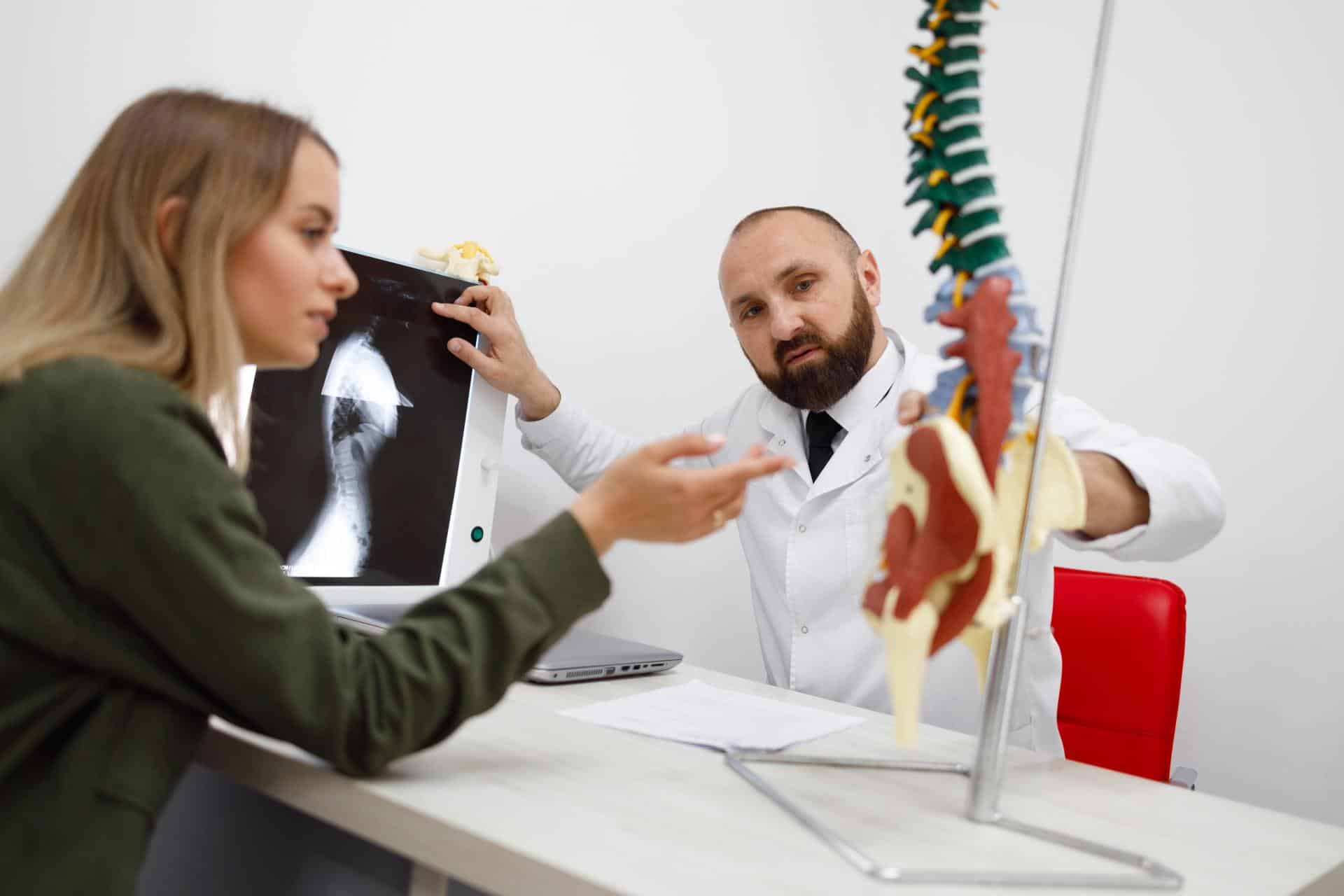Car accidents can lead to spine injuries even at low speeds, where the impact might not seem severe initially. When the spine is affected, the consequences can range from manageable to profoundly life-altering. Common car accident injuries include herniated discs, fractures, and whiplash, each with distinct long-term effects. This guide covers everything from understanding those long-term impacts to practical rehabilitation tips for more informed decisions and faster recovery.
Common Long-Term Effects of Spine Injuries from Car Accidents
The impact from a car accident can result in injuries to spinal discs, vertebrae, and ligaments that support the spine. While some symptoms may resolve within a few weeks, others linger or worsen over time. Common prolonged effects of a spine injury from a car accident include chronic back pain, stiffness, and a reduced range of motion. For instance, a herniated disc can compress nearby nerves, leading to issues like sciatica (pain that radiates down the leg), while fractures or misaligned vertebrae can trigger pain or numbness in other areas of the body.
For many, recovery is an ongoing journey that demands attention to changes in symptoms and regular check-ups to prevent minor issues from escalating. Left untreated, chronic spinal problems can contribute to further deterioration, like arthritis or recurring muscle spasms, and even lead to lifestyle limitations.
Symptoms of a Spine Injury You Shouldn’t Ignore
Identifying a spine injury early can make a difference in long-term outcomes. While some symptoms may seem minor at first, certain signs can point to more serious injuries that require professional assessment. Here are key symptoms that may signal a significant spine injury following a car accident:
- Persistent back or neck pain: Any lingering discomfort in these areas should be checked, as it could indicate issues with spinal discs or nerves.
- Tingling or numbness: A “pins and needles” sensation, especially in the arms or legs, often points to nerve irritation or compression.
- Muscle weakness: This could be due to nerve compression, which disrupts signals between the brain and muscles.
- Headaches: If persistent, headaches can stem from neck injuries like whiplash.
- Restricted movement or stiffness: Difficulty moving your neck or back may be a result of muscle tension or misalignment in the spine.
If these symptoms persist, consider seeking medical advice to avoid the risks of untreated spinal damage.
Immediate Actions to Take After a Car Accident Spine Injury
If you suspect a spine injury after an accident, taking immediate steps can minimize further damage and help facilitate recovery. Here’s what you should do:
- Stay still: Try to limit movement, especially if you feel pain in the spine. Sudden movements can worsen the injury.
- Seek emergency help: Even if you feel fine initially, it’s essential to consult a healthcare professional to rule out hidden injuries.
- Apply cold compresses: This can help reduce swelling and inflammation at the injury site.
- Document symptoms: Write down any symptoms you notice, as this will assist medical providers in diagnosing and planning your treatment.
- Avoid heavy lifting or intense movement: These activities can strain the injured area, potentially worsening the condition.
Rehabilitation Tips for Spine Injury Recovery

Rehabilitation is essential for improving mobility, managing pain, and strengthening the spine to support a full recovery. Following a spine injury, a well-rounded rehabilitation plan can make a significant difference in the quality and speed of recovery. Here are some effective rehabilitation practices for spine injury recovery:
- Physical Therapy: Working with a physical therapist is one of the most effective ways to regain strength and flexibility in the spine. Physical therapists design tailored exercises to gradually restore movement, often focusing on core and back muscles to support the spine. Consistent sessions can prevent further injury and ease muscle imbalances that may contribute to pain.
- Stretching Exercises: Gentle, controlled stretching under professional guidance helps to release tension around the spine. By gradually improving flexibility, stretching can prevent stiffness and improve posture, both of which are crucial for spinal health. Stretching also reduces the likelihood of muscle spasms around the injured area.
- Massage Therapy: Massage therapy targets muscle tightness and discomfort, helping to alleviate tension around the injury. By promoting blood flow, it supports healing and helps release endorphins, the body’s natural painkillers. Massage can be especially beneficial for those experiencing muscle knots or soreness from compensatory movements after a spine injury.
- Spinal Decompression Therapy: This non-surgical therapy provides relief by gently stretching the spine, helping to reduce pressure on compressed nerves and discs. For individuals with herniated discs or nerve compression, spinal decompression can significantly alleviate symptoms like radiating pain and numbness. This treatment can be a great alternative for those seeking a non-invasive option.
- Heat and Cold Therapy: Alternating between hot and cold packs is a simple yet effective way to control pain and inflammation. Heat helps relax tight muscles and increases blood flow, while cold packs numb sore areas and reduce swelling. This combination can offer immediate relief from discomfort, especially in the early stages of rehabilitation.
Each of these methods works best as part of a comprehensive rehabilitation plan tailored to your specific needs. Working closely with a healthcare provider ensures that each therapy is used effectively and safely for your spine injury recovery.
Lifestyle Adjustments to Support Long-Term Spine Health
Recovering from a spine injury involves not just targeted rehabilitation but also making lifestyle adjustments to protect your spine in the long term. These changes can support your recovery and reduce the risk of re-injury:
- Practice good posture: Sitting or standing with your spine in a neutral position minimizes strain on your back muscles.
- Strengthen core muscles: Core-strengthening exercises improve spinal stability, reducing the likelihood of future injuries.
- Sleep on a supportive mattress: A firm mattress helps keep the spine aligned during sleep, preventing strain.
- Avoid heavy lifting: Use proper techniques and avoid lifting heavy items, which can put undue stress on the spine.
- Stay active: Regular, low-impact activities like walking, swimming, or cycling support overall spine health and reduce stiffness.
Incorporating these adjustments into your daily routine can help you maintain spine health and prevent further complications.
The Role of Chiropractic Care in Spine Injury Rehabilitation
Chiropractic care plays a valuable role in spine injury recovery by focusing on spinal alignment, nerve health, and pain relief. Chiropractors can assess the spine’s alignment and identify areas of tension or misalignment that might be aggravating pain or restricting movement. Specific techniques, such as spinal adjustments and mobilization, help realign the vertebrae and alleviate pressure on the nerves, facilitating a smoother recovery process.
Additionally, chiropractic care focuses on strengthening surrounding muscles, which stabilizes the spine and minimizes the risk of further injury. For car accident victims, chiropractic care is an effective, natural approach to long-term pain management and rehabilitation, providing relief and enhancing mobility without invasive procedures or medication.
Affordable Chiropractic Killeen: Recovery Support After a Car Accident
Managing a spine injury after a car accident can be challenging, but the team at Affordable Chiropractic Killeen is here to help. We offer comprehensive chiropractic care that focuses on natural, non-invasive treatments to aid your recovery. From spinal adjustments to therapeutic exercises, our team is dedicated to helping you regain mobility, reduce pain, and achieve long-term health.
If you’ve been injured in a car accident, don’t wait to seek treatment. Visit Affordable Chiropractic Killeen to learn more about how we can support your recovery journey. Schedule an appointment today and take the first step toward a healthier, pain-free life.

